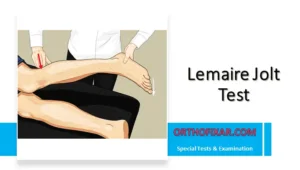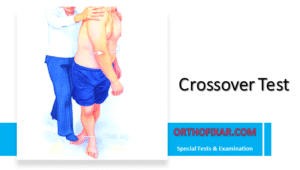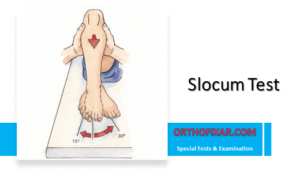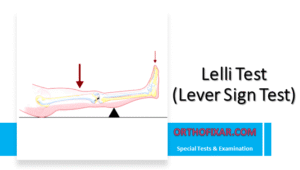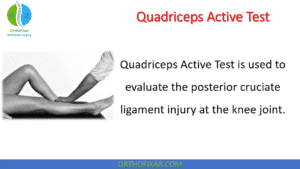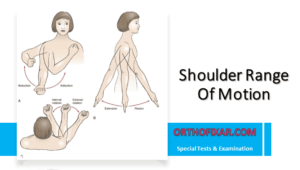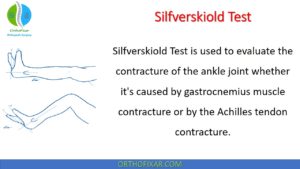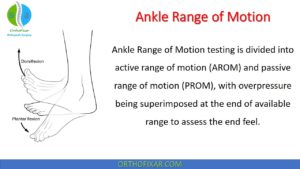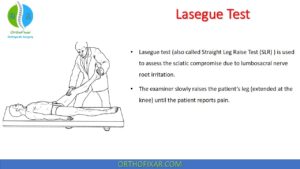Sitting Root Test
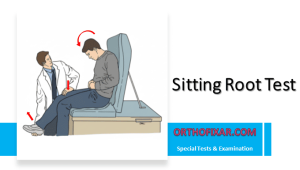
The Sitting Root Test is a neurological examination used to assess the sciatic nerve irritation or lumbar nerve root tension due to lumbar disc herniation or nerve root compression. It is considered a modification of the Slump Test and shares similar biomechanical principles with the Straight Leg Raise (SLR) Test, but it is performed with the patient in a seated position.
Anatomical and Physiological Basis
The sciatic nerve originates from the L4-S3 nerve roots of the lumbosacral plexus and is the largest nerve in the human body. During the sitting root test, several mechanical forces act upon the neural structures:
- Cervical flexion creates a cephalad (upward) pull on the spinal cord and dura mater
- Hip flexion at 90° places the sciatic nerve on stretch proximally
- Knee extension further elongates the nerve distally by moving the tibial and common peroneal nerve components
When combined, these positions create a continuum of neural tension from the cervical spine through the lumbosacral nerve roots and down the sciatic nerve distribution.
See Also: Lasegue Test | Straight Leg Raise Test
How to Perform the Sitting Root Test?
The patient sits at the edge of the examination table with the hips flexed to 90° and feet hanging freely (not touching the floor), hands resting on the thighs or examination table, and the neck flexed forward with the chin touching or approaching the chest. This posture increases tension on the dural and neural structures of the spine.
The examiner places one hand on the distal thigh of the leg being tested to prevent additional hip flexion, with the other hand, the examiner extends the patient’s knee to straighten the leg. The test may be performed actively (patient extends the knee) or passively (clinician extends the knee).
If the initial response is negative, the examiner may increase neural tension by asking the patient to flex the trunk further forward.

What does a Positive Sitting Root Test Mean?
Reproduction of pain, numbness, or tingling radiating along the posterior thigh, buttock, or calf, similar to the symptoms provoked during the Straight Leg Raise test. This indicates neural tension or sciatic nerve irritation.
Davis et al. reported that pain occurring before there is 22° of knee extension remaining (when knee extension is the last movement performed) suggests a positive finding.
Patients with true sciatic pain often arch backward and verbalize discomfort as the leg is straightened.
Notes
- The Sitting Root Test may be used to catch the patient unaware—for example, while pretending to examine the foot, the clinician passively extends the knee to elicit the pain response.
- The Bechterew Test follows a similar principle: the patient extends one knee at a time, and if no pain occurs, both knees are extended simultaneously. A positive result is indicated by reproduction of low back or leg symptoms.
Differential Diagnosis
When the sitting root test is positive, consider:
Nerve Root Pathology:
- Lumbar disc herniation
- Nerve root compression
- Radiculopathy
Other Neurogenic Conditions:
- Sciatic nerve entrapment
- Piriformis syndrome
- Neural adhesions
Non-neurogenic Mimics:
- Severe hamstring strain or contracture
- Posterior thigh myofascial pain
- Ischial bursitis
Summary
| Feature | Description |
|---|---|
| Position | Seated with neck flexed |
| Movement | Knee extension with hip at 90° flexion |
| Positive Response | Pain or reproduction of radicular symptoms |
| Indicates | Sciatic nerve irritation or lumbar nerve root tension |
| Related Tests | Slump Test, Straight Leg Raise Test, Bechterew Test |
References & More
- Davis DS, Anderson IB, Carson MC, et al. Upper limb neural tension and seated slump tests: the false positive rate among healthy young adults without cervical or lumbar symptoms. J Man Manip Ther. 2008;16:136–141. PubMed
- Hudgins WR. The crossed-straight-leg raising test. N Engl J Med. 1977;297:1127. PubMed
- Spengler DM. Low Back Pain: Assessment and Management. Orlando, FL: Grune & Stratton; 1982.
- Palmer ML, Epler M. Clinical Assessment Procedures In Physical Therapy. Philadelphia: JB Lippincott; 1990.
- Orthopedic Physical Assessment by David J. Magee, 7th Edition.
- Lifetime product updates
- Install on one device
- Lifetime product support
- Lifetime product updates
- Install on one device
- Lifetime product support
- Lifetime product updates
- Install on one device
- Lifetime product support
- Lifetime product updates
- Install on one device
- Lifetime product support
